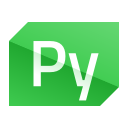QStackedLayout¶
The
QStackedLayoutclass provides a stack of widgets where only one widget is visible at a time. MoreвҖҰ

Synopsis¶
Functions¶
def
currentIndex()def
currentWidget()def
insertWidget(index, w)def
setStackingMode(stackingMode)def
stackingMode()def
widget(arg__1)
Slots¶
def
setCurrentIndex(index)def
setCurrentWidget(w)
Signals¶
def
currentChanged(index)def
widgetRemoved(index)
Detailed Description¶
QStackedLayoutcan be used to create a user interface similar to the one provided byQTabWidget. There is also a convenienceQStackedWidgetclass built on top ofQStackedLayout.A
QStackedLayoutcan be populated with a number of child widgets (вҖңpagesвҖқ). For example:self.firstPageWidget = QWidget() self.secondPageWidget = QWidget() self.thirdPageWidget = QWidget() self.stackedLayout = QStackedLayout() self.stackedLayout.addWidget(self.firstPageWidget) self.stackedLayout.addWidget(self.secondPageWidget) self.stackedLayout.addWidget(self.thirdPageWidget) self.mainLayout = QVBoxLayout() self.mainLayout.addLayout(self.stackedLayout) self.setLayout(self.mainLayout)
QStackedLayoutprovides no intrinsic means for the user to switch page. This is typically done through aQComboBoxor aQListWidgetthat stores the titles of theQStackedLayoutвҖҳs pages. For example:self.pageComboBox = QComboBox() self.pageComboBox.addItem(tr("Page 1")) self.pageComboBox.addItem(tr("Page 2")) self.pageComboBox.addItem(tr("Page 3")) self.pageComboBox.activated.connect(self.stackedLayout.setCurrentIndex)When populating a layout, the widgets are added to an internal list. The
indexOf()function returns the index of a widget in that list. The widgets can either be added to the end of the list using theaddWidget()function, or inserted at a given index using theinsertWidget()function. TheremoveWidget()function removes the widget at the given index from the layout. The number of widgets contained in the layout, can be obtained using thecount()function.The
widget()function returns the widget at a given index position. The index of the widget that is shown on screen is given bycurrentIndex()and can be changed usingsetCurrentIndex(). In a similar manner, the currently shown widget can be retrieved using thecurrentWidget()function, and altered using thesetCurrentWidget()function.Whenever the current widget in the layout changes or a widget is removed from the layout, the
currentChanged()andwidgetRemoved()signals are emitted respectively.See also
- class PySide2.QtWidgets.QStackedLayout¶
PySide2.QtWidgets.QStackedLayout(parentLayout)
PySide2.QtWidgets.QStackedLayout(parent)
- param parent:
- param parentLayout:
Constructs a
QStackedLayoutwith no parent.This
QStackedLayoutmust be installed on a widget later on to become effective.See also
addWidget()insertWidget()Constructs a new
QStackedLayoutand inserts it into the givenparentLayout.Constructs a new
QStackedLayoutwith the givenparent.This layout will install itself on the
parentwidget and manage the geometry of its children.
- PySide2.QtWidgets.QStackedLayout.StackingMode¶
This enum specifies how the layout handles its child widgets regarding their visibility.
Constant
Description
QStackedLayout.StackOne
Only the current widget is visible. This is the default.
QStackedLayout.StackAll
All widgets are visible. The current widget is merely raised.
- PySide2.QtWidgets.QStackedLayout.currentChanged(index)В¶
- Parameters:
index вҖ“ int
- PySide2.QtWidgets.QStackedLayout.currentIndex()В¶
- Return type:
int
This property holds the index position of the widget that is visible.
The current index is -1 if there is no current widget.
See also
- PySide2.QtWidgets.QStackedLayout.currentWidget()В¶
- Return type:
Returns the current widget, or
Noneif there are no widgets in this layout.See also
- PySide2.QtWidgets.QStackedLayout.insertWidget(index, w)В¶
- Parameters:
index вҖ“ int
- Return type:
int
Inserts the given
widgetat the givenindexin thisQStackedLayout. Ifindexis out of range, the widget is appended (in which case it is the actual index of thewidgetthat is returned).If the
QStackedLayoutis empty before this function is called, the givenwidgetbecomes the current widget.Inserting a new widget at an index less than or equal to the current index will increment the current index, but keep the current widget.
See also
addWidget()removeWidget()setCurrentWidget()
- PySide2.QtWidgets.QStackedLayout.setCurrentIndex(index)В¶
- Parameters:
index вҖ“ int
This property holds the index position of the widget that is visible.
The current index is -1 if there is no current widget.
See also
- PySide2.QtWidgets.QStackedLayout.setCurrentWidget(w)В¶
- Parameters:
Sets the current widget to be the specified
widget. The new current widget must already be contained in this stacked layout.See also
- PySide2.QtWidgets.QStackedLayout.setStackingMode(stackingMode)В¶
- Parameters:
stackingMode вҖ“
StackingMode
This property determines the way visibility of child widgets are handled..
The default value is
StackOne. Setting the property toStackAllallows you to make use of the layout for overlay widgets that do additional drawing on top of other widgets, for example, graphical editors.
- PySide2.QtWidgets.QStackedLayout.stackingMode()В¶
- Return type:
This property determines the way visibility of child widgets are handled..
The default value is
StackOne. Setting the property toStackAllallows you to make use of the layout for overlay widgets that do additional drawing on top of other widgets, for example, graphical editors.
- PySide2.QtWidgets.QStackedLayout.widget(arg__1)В¶
- Parameters:
arg__1 вҖ“ int
- Return type:
Returns the widget at the given
index, orNoneif there is no widget at the given position.See also
- PySide2.QtWidgets.QStackedLayout.widgetRemoved(index)В¶
- Parameters:
index вҖ“ int
В© 2022 The Qt Company Ltd. Documentation contributions included herein are the copyrights of their respective owners. The documentation provided herein is licensed under the terms of the GNU Free Documentation License version 1.3 as published by the Free Software Foundation. Qt and respective logos are trademarks of The Qt Company Ltd. in Finland and/or other countries worldwide. All other trademarks are property of their respective owners.
